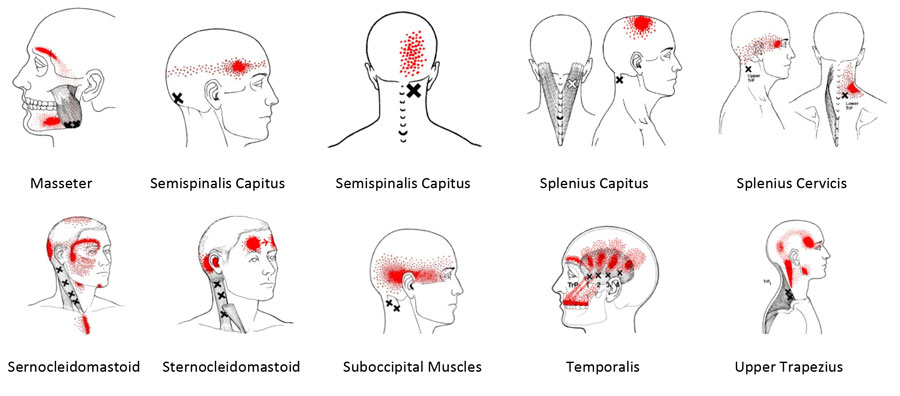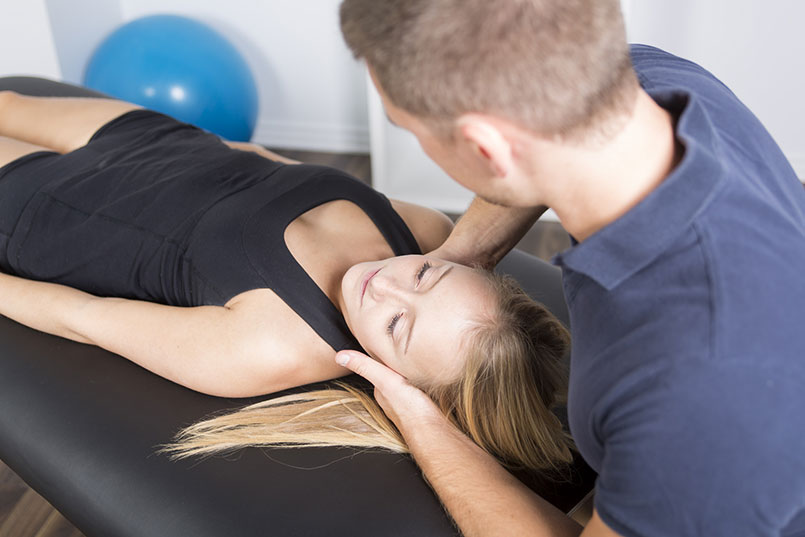|
BOOK NOW |
ASK ABOUT YOUR PAIN |
Home > Blog > Physiotherapy > Conditions > Headaches Physiotherapy
Headaches Physiotherapy

Pain of any type that occurs in any part of the head is called a headache.
There are many different types of headaches, and just as many causes of headaches unfortunately. The International Headache Society describes several different categories of headache:
- Tension-type
- Migraine and cluster
- Secondary headaches from an underlying condition, such as fever, infectious disease, sinus disorder, or in rare cases, a tumor or more serious illness
- Cranial neuralgias, facial pain, and other headaches
Most headaches are harmless and typically can and does resolve on their own, although severe headaches that recur frequently can affect your ability to do your daily activities and can reduce your quality of life.
Good news is that there is effective treatment for almost every type of headache.
The main challenge in treating headaches effectively is primarily in assessment and diagnosis: determining the type of headache, its cause, and in developing an appropriate treatment plan that will reduce both its frequency and intensity.
Our senior physiotherapists can help determine the type of headache you have and are experts in managing pain from tension-type headaches.
What are Headaches?

Headaches, like back pain, are one of the most common of all physical complaints and can be one of the most frustrating to manage. Pain of any type that occurs in any part of the head is called a headache.
Tension-type headaches (also called muscle-spasm headaches) are the most common types of headaches in adults. They may be caused by a
- neck-related
- jaw problem
- poor posture
- fatigue or
- stress
A problem in the neck, head, or jaw; such as an injury or arthritis can lead to tension in the muscles at the back of the head and to increased pressure on the nerves to the face and head. Poor posture can also cause these muscles to become overworked, which can trigger a headache.
How Does a headache Feel like?
A tension-type headache typically begins at the back of the head and spreads to the top of the head and the eyes.
Patient may feel an increase in facial pain along the cheeks near the jaw bone.
Some describe a tightness, a sensation of someone tugging on their hair, or a feeling of wearing a tight cap. These headaches can worsen with specific positions - such as sitting at a desk - and may ease with rest.
how our senior physiotherapists can help

We will conduct a thorough examination that includes a review of your health history. We also will ask you questions and will perform tests to determine the most likely cause of your headaches. For example, Ask you:
- to recall any previous injuries to your neck, head, or jaw
- the location, nature, and behavior of your pain and other symptoms
- to draw your areas of pain on a body diagram
- Perform tests of muscle strength and sensation
- Examine your posture when sitting, standing, and performing various activities
- Measure the range of motion of your neck, shoulders, and other relevant parts of your body
- Use manual therapy to evaluate the mobility of the joints and muscles in your neck
If it appears that you do have tension-type headaches, we will work with you to design a plan of care to meet your goals. If the evaluation indicates that you may have a different type of headache--such as
- sinus
- migraine or
- cluster headache
we likely will refer you to another health care professional for additional diagnostic tests and treatment.
We will work with you to correct the problems that are causing your pain and will help you learn to prevent headaches through simple changes in your posture and lifestyle:
Improve neck mobility
We use a specialized technique called manual therapy to increase movement and relieve pain and to stretch the muscles of the back of the neck.
Improve your strength
We will teach you exercises to increase the strength of the muscles that help stabilize your upper back and neck to improve your posture and endurance and make it easier for you to sit or stand for longer periods of time without discomfort.
Improve your posture
We will teach you to ways to improve your posture. Whether it is simply pushing your chest out or pulling your shoulder blades backward and together, slight modifications to everyday living can make a vast improvement in posture.
Modify your workstation or home office. Tips may include:
- using a headset instead of a regular phone
- adjusting your computer screen so that it is no lower than the level of your eyes
- finding an appropriate desk chair
- adjusting the position of your computer mouse